STUDENTS PROJECTS
PROJECTS2013
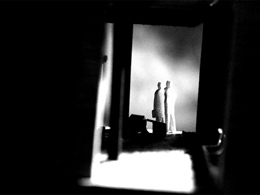
20 January, 2014
Theatre complex at Koukaki, Athens
The purpose of this Diploma Thesis Project is the design of a theatre complex, which would be constructed in an available site area in Koukaki, Athens.
Students : Charatsari Charikleia, Tzovla Chryssanthi
Instructors: Gyftopoulos Stavros, Tsiraki Sofia
National Technical University of Athens, Faculty of Architecture
Presntation Date: 16-07-2013
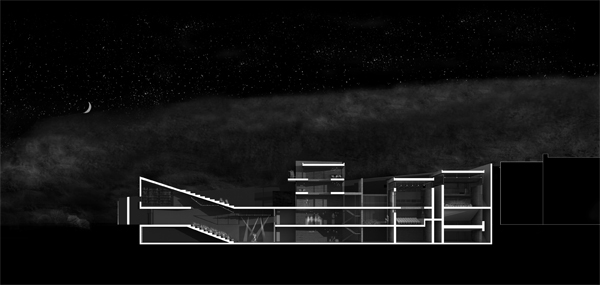
The purpose
The purpose of this Diploma Thesis Project is the design of a theatre complex, which would be constructed in an available site area in Koukaki, Athens. Four theatrical cells, whose typology and scale vary, are incorporated into the structure of the complex. Located close to highly important monuments, such as the Odeon of Herodes Atticus, the Doras Stratou theatre and the Philopappos monument, the theatre complex could play a vital role for citizens' cultural education, because it is expected to be the melting pot of the art of theatre and the history of the area. Therefore, we propose to house the theatrical art in such shelters so that the theatres could be used as "vital boxes" by the viewers. The term "vital box" comes from the fact that a theatrical space not only serves as a venue but it also gives birth to spatial relationships between viewers and actors. As a result, people who take part in or watch a play, can experience a fictional reality and find their own truth through the theatrical myth. A special relationship is produced between viewers and actors, which bestirs their senses. So, we design four different theatrical cells, small in scale and equipped with motorized architectural elements with the aim of creating a theatrical atmosphere.
The site area
It is very important for us to find an available plot of land in the urban area of Athens, which will be near recreational and cultural facilities. The reason for this is that the vicinity of the theatre complex with other public regions helps in designing an organized web of public facilities in an urban space. We have chosen this particular site based on the advantage of its proximity to Philopappos Hill, a well-known tourist area. More specifically, the features of the site area are:
1) Triangular plan, with max. Length112m. and max. Width5m.
2) The two elongated sides of the triangle have max.difference 6.5m. in height level.
3) There are two facades in the plot with indisputable historical importance, as there are remains of two neoclassical residences.
The concept
The main idea of the design of the complex stems from the creative combination of the triangular plan of the site area, the setting of an eye-catching structure in the most acute angle of the triangle and the structures of the neoclassical facades. As regards the building itself, Filopappos street becomes the basic axis around which the theatre complex is assembled. Based on the web, which is produced by drawing vertical axes to the basic one, we incorporate the neoclassical structures in the structure of the complex. This building, thus, re-examines the influences of the semi-public function of the complex in the city. Unlike most theatres, this one includes two open public squares that stand at different heights so as to have access to the ground level of Filopappos street and a higher level of Panaitoliou street respectively. The connection between these two squares is achieved through an open staircase. The upper level square can alternatively be used as an open stage for an open proscenium theatre that is placed in the most acute angle of the site area. The design of the theatre cells necessitates the construction of a rough-concrete, freestanding wall along the Panaitoliou street, which filters the sound and the light from outdoors and controls people's access to the building. This wall, therefore, encloses the volumes of the composition, which basically consists of the followings:
1) Three theatrical boxes(two of which are designed to be behind the historical facades and the other one is a four-level tower that serves different public functions, such as the entrance hall, the bar, the library and a sitting place)
2) An underground proscenium theatre, set in the most acute angle of the site area
3) A web of horizontal structures, which connects the theatre cells, the theatre cells with the tower, the interior uses of the building with the squares and the open spaces of the building with the city. It is an architectural element that plays a connecting role for the composition and links the private and the public.
Building materials
The materials are used with the aim of making clear which of the architecture elements belongs to the present and which to the past. So, the reinforced concrete (a rough material, related to the materiality of the hill) is selected for new constructions and the white plaster for the neoclassical facades, as plastered surfaces are commonly used in neoclassical architecture. In the interior of the theatres, metal frames are placed on the concrete walls, which are used for the installation of the lightning and the sound equipment.
The contrast between the textures of the using materials (plaster, concrete, metal) and the combination of the various structures are the factors that gradually transport the viewers from the realistic urban space to the fictional world of theatre.
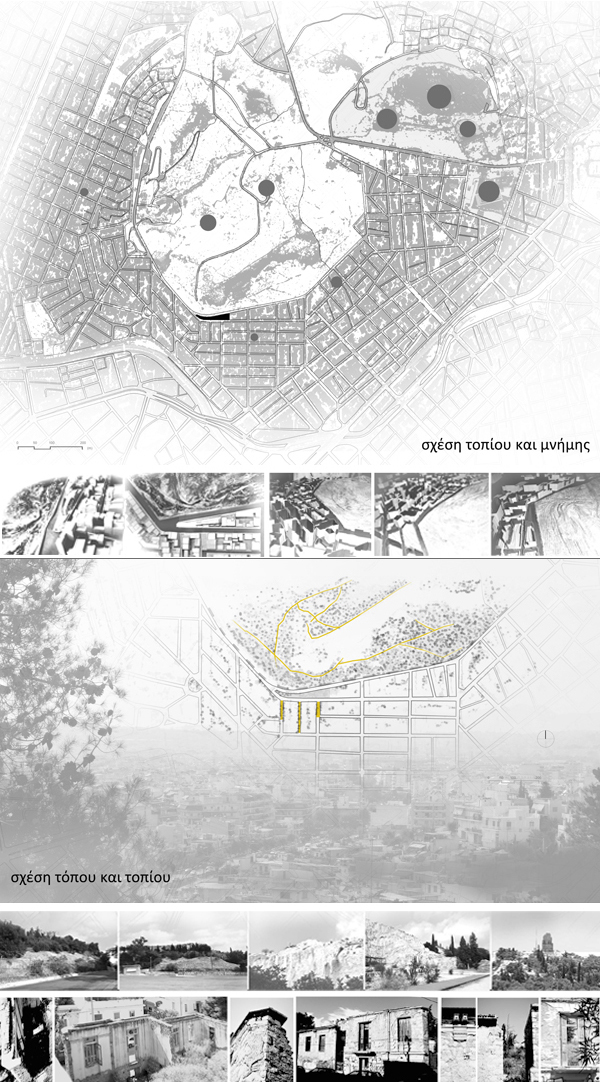
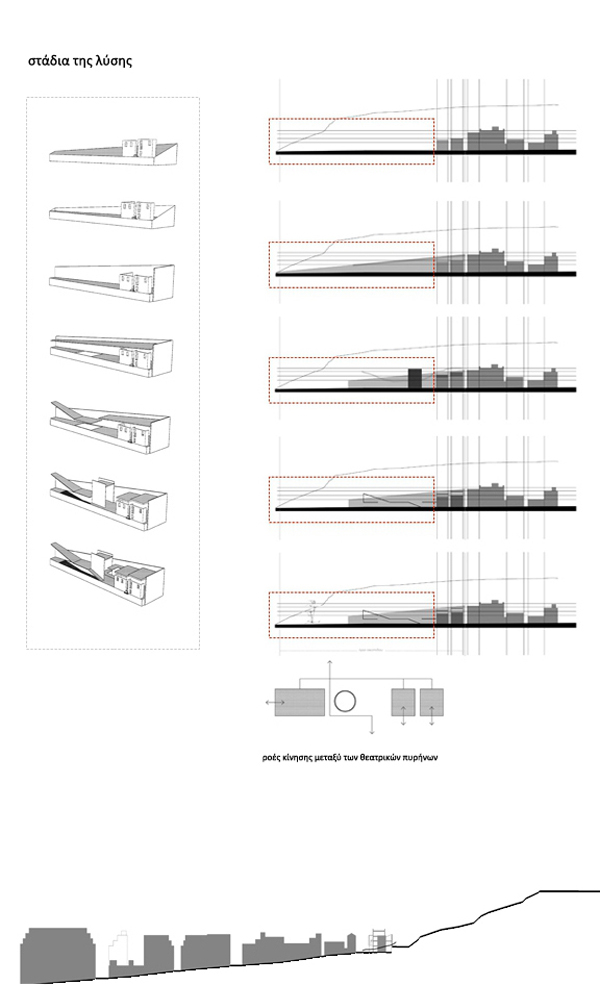
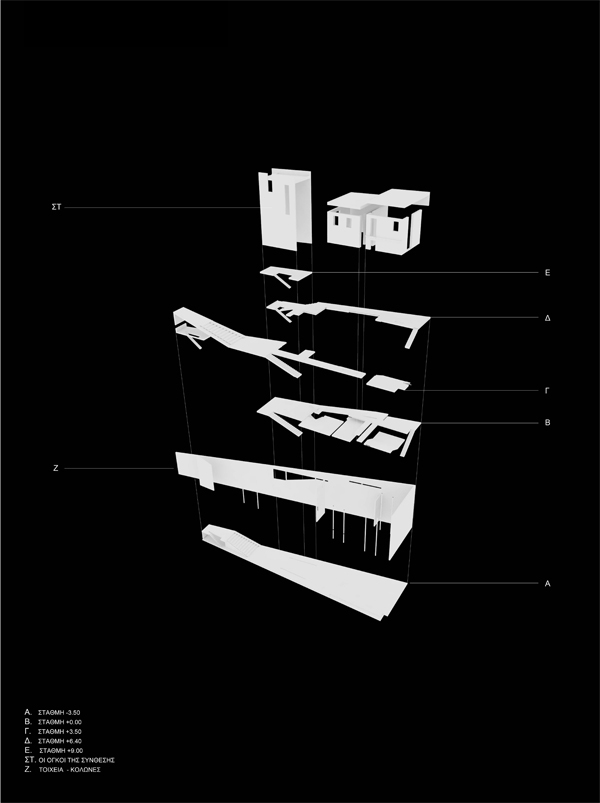
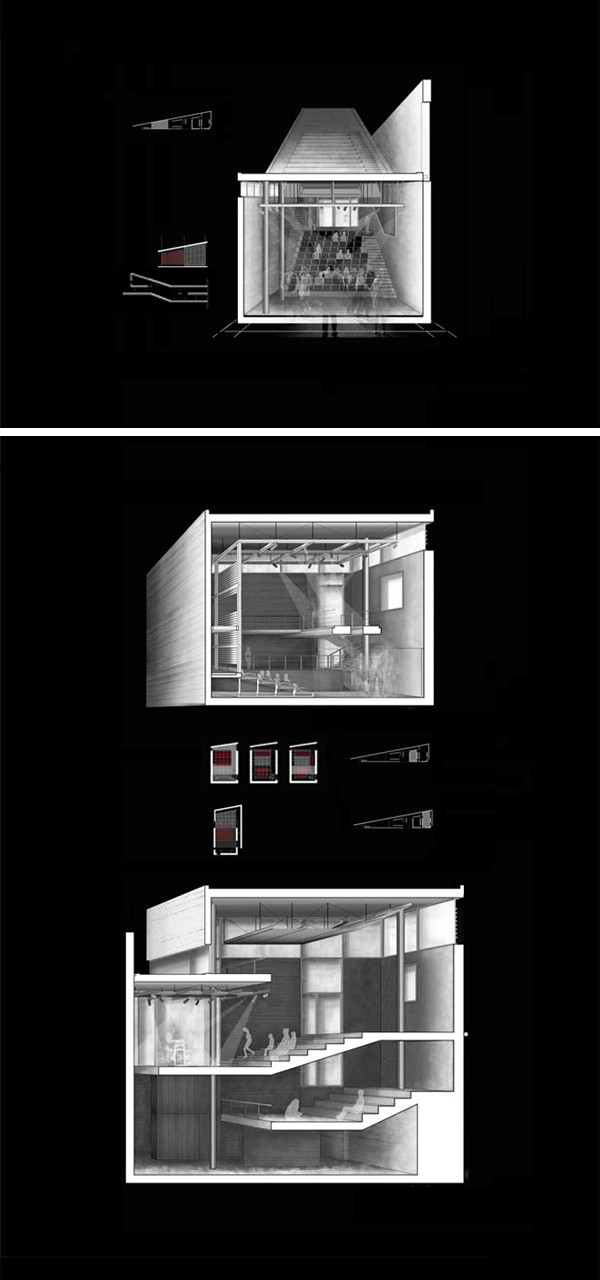

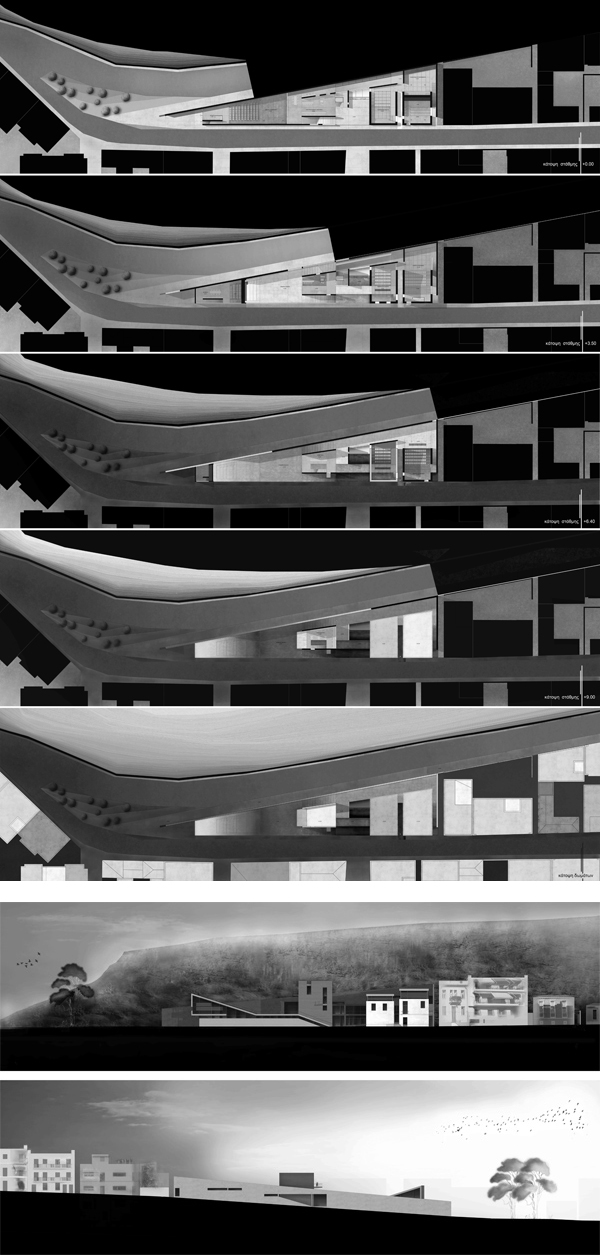

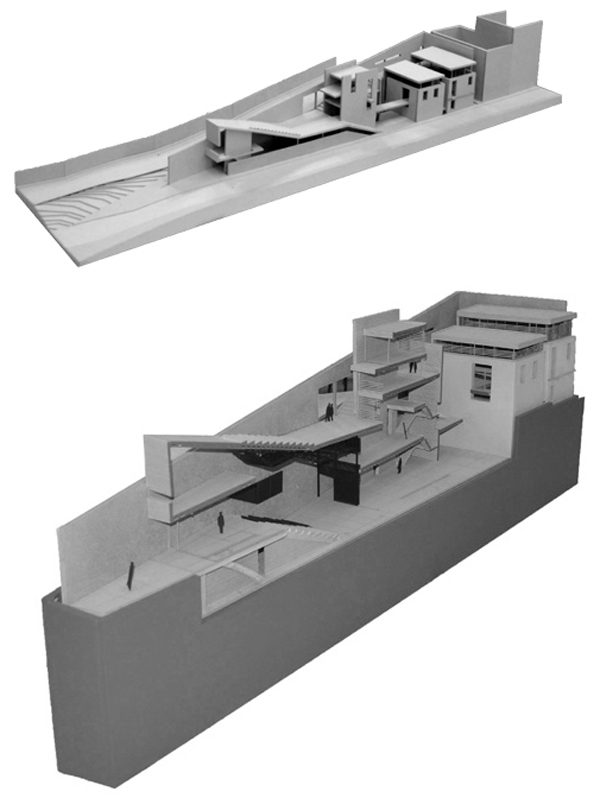
Related articles:
- DESTROY below the ACROPOLIS - VIDEO ( 13 November, 2007 )
- Architectural cannibalism in Athens ( 23 July, 2009 )
- The Acropolis Museum: An Unhappy Fit ( 08 June, 2010 )
- The New Acropolis Museum: A Triumph of Sophistry ( 21 September, 2009 )
- Αrchitectural competition ( 13 March, 2009 )
- D. Areopagitou 2008: reformation competition of the rear views of historic buildings towards the new Acropolis Museum ( 25 July, 2011 )
- New Acropolis museum ( 06 January, 2013 )
- All about fish ( 14 February, 2013 )
- New Acropolis Museum (NAM) ( 07 October, 2013 )
- The archaeological museum of Ancient Messene and the architectural configurations of the archaeological site ( 08 January, 2014 )
- Redefining Leftovers ( 05 April, 2014 )
- Reformation and rehabilitation of an inactive quarry, with spatial location of uses for Tourism, Recreation and Environmental Education ( 10 February, 2014 )
- Cultural center of Glyfada ( 23 February, 2014 )
- Environmental Center and Cultural Center in Kaiafa’s Lake ( 21 March, 2014 )
- The rack railway museum at Vouraikos gorge ( 18 April, 2014 )
- Museum of underwater antiquities in Chios ( 01 June, 2014 )
- Archaeological museum in Astypalaia ( 03 November, 2014 )
- Art multiplex in the Customs Office area in Palaia, Volos ( 24 February, 2015 )
- Diploma projects exhibition museum of school of architecture ( 02 March, 2015 )
- Lighthouse Museum in Andros ( 20 April, 2015 )
- Archaeological Museum for the Neighbourhood of Plato’s Academy ( 15 April, 2015 )
- Palazzo di Lorenzo’s Museum in Sicily ( 15 May, 2015 )
- New Archaeological Museum of Delos ( 19 July, 2015 )
- Archaeological Museum of Eleftherna ( 01 September, 2015 )










